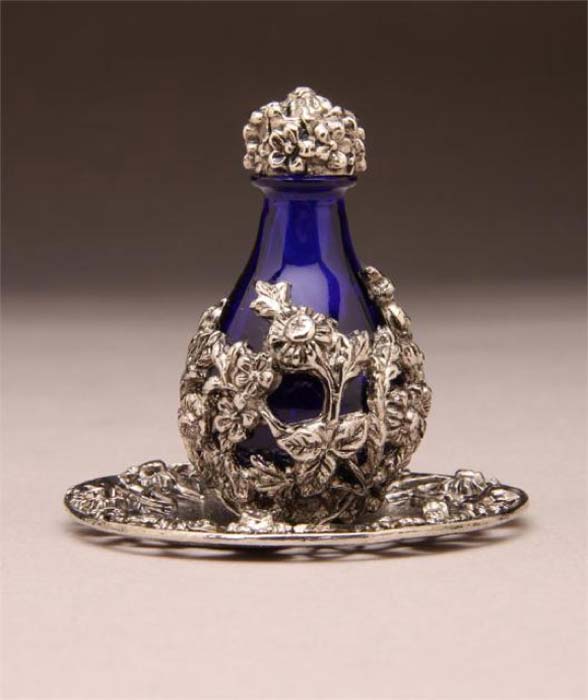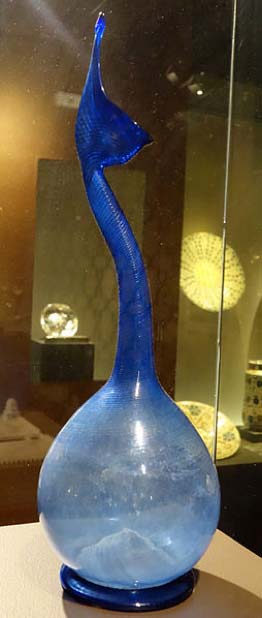
Capturing Scents, Not Tears: Debunking the Myth of Tear Catchers
Victorians are often remembered for their obsession with death and mourning. It is not too surprising to discover that they had specific practices and even special objects created to further enhance their link with the dead. A tear catcher is one example of mourning paraphernalia that was especially popular during the Victorian period. But this strange object may have even more ancient origins.
A tear catcher (also known as a ‘tear bottle’ or a ‘lachrymatory’) is a bottle made of blown glass that was supposedly used to catch tears. Although it has been claimed that the history of tear catchers stretches back to ancient times, not everyone is convinced by this, and it has been proposed that instead of tears, ancient so-called tear catchers contained other sorts of liquids.

Little glass vials commonly known as tear catchers. (The Victorianachronists)
The Victorian Obsession with Death and Mourning
The Victorians are well known for their obsession with death and mourning. Victorians developed their own unique death culture and customs, which included such practices as wearing mourning clothes for the rest of their lives after the death of a loved one and making personal mementos of the deceased. Tear catchers fall within the category of their mourning paraphernalia.
Basically, tear catchers were small bottles made using blown glass. The glass was usually clear, though it may have also been richly decorated with patterns, gilding, and enamel. At its simplest, mourners would collect the tears they shed with a tear catcher. One of the most common stories about the use of the tear catcher during Victorian times is that once the bottle was filled, it would be stopped with a special stopper that allowed the tears to evaporate. When all tears in the tear catcher evaporated, only then would the mourning period be considered over.

A highly decorative example of a supposed tear catcher. (The Victorianachronists)
Ancient Tear Catchers
It has been suggested that tear catchers were used not only by the Victorians, but also by ancient societies. It has been claimed, for instance, that tear catchers were used in the ancient Near East. Proponents of this view cite the many small bottles found in the tombs of the wealthy as evidence that tear catchers were used in ancient times. The practice of tear catching has also been said to be found in the Bible. In Psalm 56:8, the Psalmist says, “You tell my wanderings: put you my tears into your bottle: are they not in your book?”
- The Fallen Women: Were Victorian Prostitutes Really Fallen?
- Disrespect and Desecration at Victorian Mummy Unwrapping Parties
- Legends of Spring Heeled Jack, the Uncatchable Demon of Victorian England

Swan-neck bottle (Persian: ashkdān, "container for tears"), mold-blown glass, 18th or 19th century, Iran (possibly Shiraz). Montreal Museum of Fine Arts. (Sandstein/CC BY SA 4.0)
Tear catchers have also allegedly been found in Greek and Roman tombs. It has been claimed that Roman mourners would collect their tears in these tear catchers as a sign of their respect for the deceased. The more tears collected, the more respected the person was.

Roman tear bottle (circa 100 AD). (Auckland Museum/CC BY 4.0)
Tear catchers, however, were not associated only with mourning the loss of life. During the American Civil War period, the wives of soldiers would save their tears in tear catchers whilst their husbands were away fighting. The collected tears were supposed to show the woman’s devotion to her husband. If the husband died, the woman would sprinkle the tears on his grave on the first anniversary of his death, which marked the end of the customary mourning period.
- Death by Wallpaper: When Arsenic in the Walls Was Killing Children
- A Pig in a Coffin, A Pregnant Goat, and a Dog That Died in Childbirth: What Were Bizarre Animal Remains Doing in an Anglo-Saxon Church?
- Negotiating with Death: Special Agreements for the Afterlife Around the World
Tear Catcher Perfume Bottles?
Although the glass bottles found in ancient tombs were initially thought to be tear catchers, this does not seem to be the case today. In more recent times, scholars are of the opinion that these bottles were in fact used to hold perfumes or unguents, which were objects believed to be required by the deceased for the afterlife.
The same has been said for the tear catchers of the Victorian era. It has been suggested that these “tear catchers” were actually just throwaway perfume bottles. As the Victorians have been associated with death and the macabre in the popular imagination, it was not difficult for people to interpret the little perfume bottles as tear catchers.

Tear catchers? Not likely. These were probably used to hold scents, not tears. (Dolly of London)
Today, much doubt has been cast on the veracity of the existence of Victorian or ancient tear catchers, with some suggesting that such objects did not even exist in the first place. Nevertheless, the romantic notion that mourners would save their tears in little bottles remains.
Top image: A supposed Victorian tear catcher. The real use of this type of glass vial is debatable. Source: The Vintage Vault
By Wu Mingren
References
Hall, A., 2013. Lacrymatory - Tear Catchers. Available at: http://www.theparanormalguide.com/blog/lacrymatory-tear-catchers
Haute Macabre, 2017. Catching Feelings: The Myth of Victorian-Era Tear Catchers. Available at: http://hautemacabre.com/2017/03/catching-feelings-the-myth-of-victorian-era-tear-catchers/
Lachrymatory.com, 2008. Tear Bottle History. Available at: http://www.lachrymatory.com/History.htm
tearcatcher.com, 2018. Tear Bottle History. Available at: http://tearcatcher.com/tear-bottles/tear-bottle-history/
Vatomsky, S., 2017. Debunking the Myth of 19th-Century ‘Tear Catchers’. Available at: https://www.atlasobscura.com/articles/tearcatchers-victorian-myth-bottle
Woodyard, C., 2017. Transparent Fiction – The Myth of the Victorian Tear Bottle. Available at: http://hauntedohiobooks.com/news/13531/















